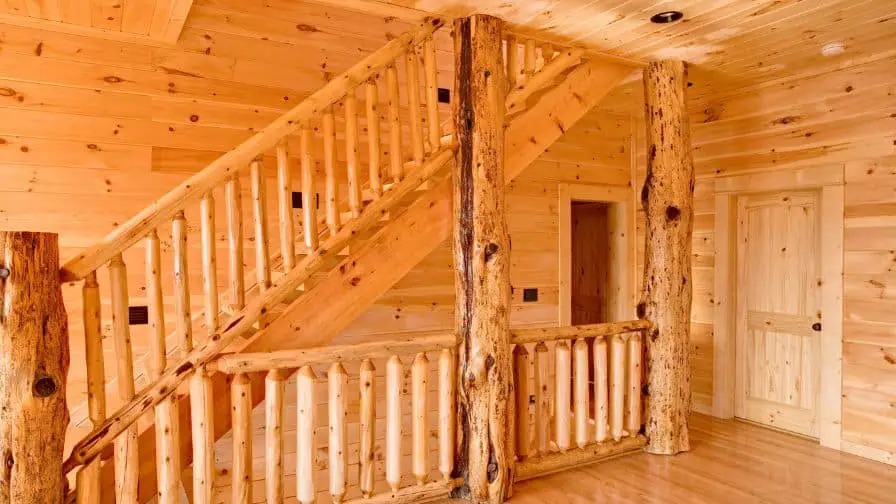
If you’re looking for a way to lighten up your knotty pine, bleach is the answer. While it can be a little tricky to get the right mix, the results are worth it. In this blog post, we’ll walk you through the process of bleaching your knotty pine and show you how to get the perfect results every time.
What Is Knotty Pine And Why Might You Want To Bleach It
Knotty pine is a type of wood that has knots, or small bumps, in it. The knots give the wood a unique appearance and can make it more challenging to work with. You might want to bleach knotty pine if you’re looking for a way to lighten the color of the wood or remove stains. Bleaching knotty pine is a relatively simple process, but it’s important to follow the instructions carefully to avoid damaging the wood.
If you’re thinking about bleaching your knotty pine, you should keep a few things in mind. First, bleaching will lighten the color of the wood, so if you’re trying to match a specific stain, you may want to test the bleaching process on a small area first. Second, bleaching can be a bit harsh on the wood, so it’s important to protect your hands and lungs from the fumes. Finally, you’ll need to use a sealer after bleaching to protect the wood from further damage.
How To Bleach Knotty Pine
To bleach knotty pine first, you’ll need to gather your supplies. You’ll need bleach, water, gloves, and a brush. Mix the bleach and water in a bucket.
Next, you’ll need to prep your work area. Cover any surfaces that you don’t want to get bleach on. I like to use old sheets or tarps.
Now, it’s time to start bleaching! Dip your brush into the bleach mixture and apply it to the knots in the wood. Be sure to work in a well-ventilated area.
Allow the bleach to sit for a few minutes, then rinse it off with water. Repeat this process until you’re happy with the results.
And that’s it! You now have beautiful, bleached knotty pine. Enjoy your new space!
How To Get The Perfect Results Every Time
Subscribe to Maker Beach
There’s nothing like the look of freshly bleached knotty pine. The problem is, that it can be tough to get the perfect results every time.
Here are a few tips to help you achieve that perfect bleached look:
- Start with clean wood. Any dirt or grime will show up once the wood is bleached.
- Sand the wood before bleaching. This will help to evenly distribute the bleach and avoid any splotchy areas.
- Be careful not to overbleach. Knotty pine is a soft wood, so it can be easy to damage if you’re not careful.
With these tips in mind, you should be able to get the perfect results every time you bleach knotty pine. Just take your time and be careful, and you’ll have beautiful bleached wood in no time.
Tips And Tricks For Bleaching Knotty Pine
If you’re looking for tips and tricks on how to bleach knotty pine, look no further! Here are some helpful hints that will make your bleaching project a success:
- Always use gloves when working with bleach. Bleach is a powerful chemical and can cause skin irritation.
- Make sure the area you’re working in is well-ventilated. Bleach fumes can be harmful to your health.
- Dilute the bleach with water before applying it to the wood. This will help prevent damage to the wood.
- Test the diluted bleach on a small area of the wood before applying it to the entire piece. This will help you gauge how much bleaching power you’ll need.
- Apply the bleach to the wood with a brush or sponge. Work in small sections and be sure to follow the manufacturer’s instructions.
- Rinse the bleach off with clean water when you’re finished.
- Dry the wood thoroughly before applying a finish.
Failing to follow these simple tips can result in a bleaching disaster. So take your time, be careful, and enjoy the process of transforming your knotty pine into beautiful, bleached wood!
Does Wood Bleach Work On Pine?
Yes wood bleach will work on pine. If you’re using chlorine-based bleach, it will work well on pine. However, if you’re using oxygen-based bleach, it may not work as well. The reason for this is that oxygen bleaches can sometimes cause the wood to become discolored. If you’re not sure which type of bleach to use, ask a professional.
If you’re planning on using wood bleach on pine, make sure to test it in an inconspicuous area first. This will help you determine whether or not the bleach will cause the wood to become discolored. Once you’ve determined that the bleach won’t cause any damage, you can proceed with bleaching the entire piece of pine.
Remember to always follow the manufacturer’s instructions when using wood bleach. This will help ensure that you don’t damage the wood or cause any harm to yourself.



